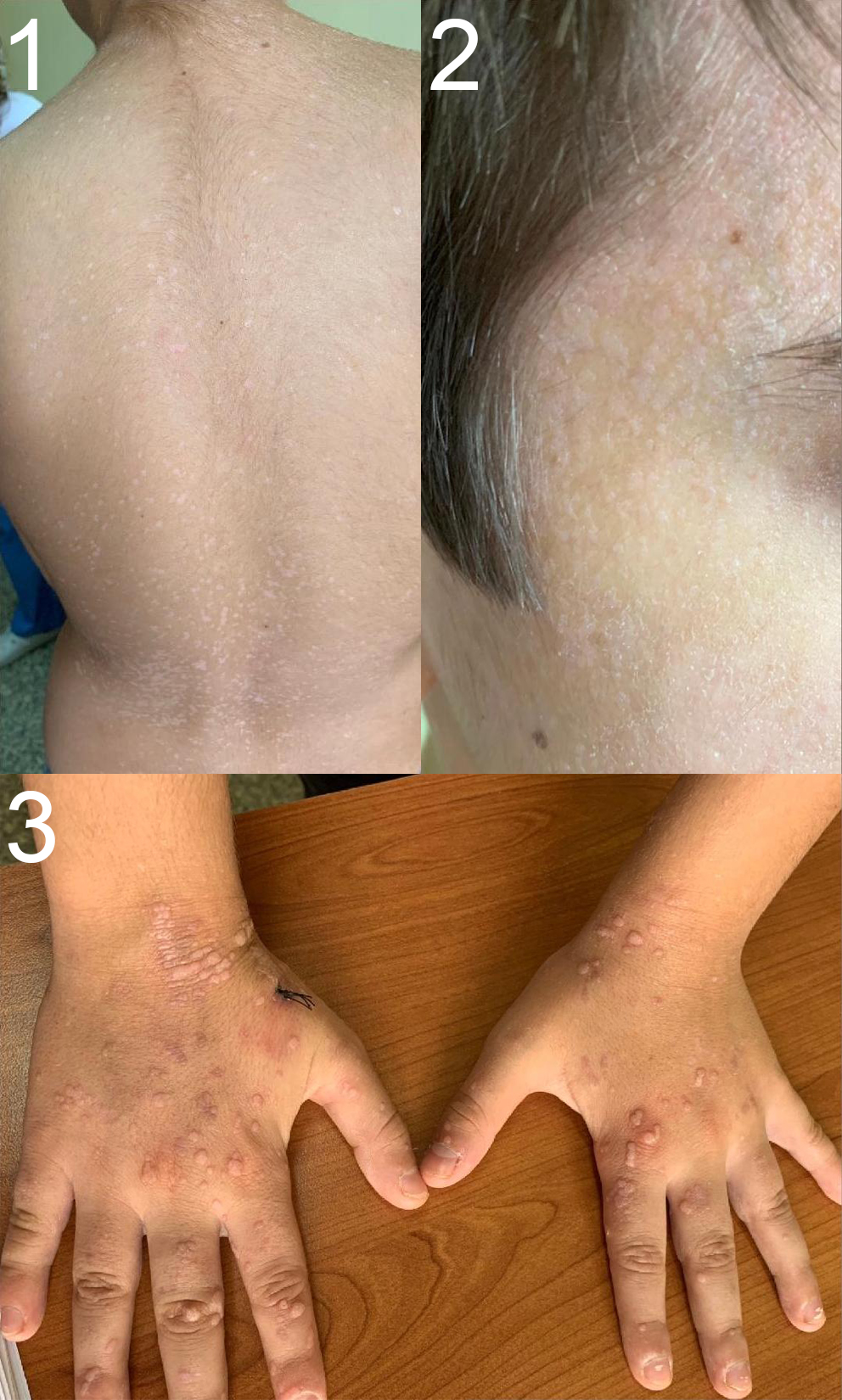Epidermodysplasia verruciformis: therapeutic approach with imiquimod
Image Description
Epidermodysplasia verruciformis (EV), also known as Lewandowsky-Lutz syndrome, is a rare heritable disease characterized by an unusual susceptibility to infection with specific types of human papillomavirus and a propensity for developing skin malignant tumours [1]. Partial defects in cell-mediated immunity have been demonstrated in this disease. Etiopathogenesis of the disease includes genetic factors, immunologic factors and persistent HPV infections [2,3]. Here, we describe a 13-year-old patient with EV who was treated successfully with imiquimod 5%.
On physical examination, hypopigmented irregular flat wart-like papules on the dorsal hands, involving the fingers (Fig. 3) and on the elbows, and pityriasis versicolor-like macules on the trunk (anterior and posterior), neck and face (sun-exposed skin) (Fig. 1-2) were seen. The lesions are extending into the scalp, which gives the appearance of seborrheic dermatitis.
Biopsy from the lesions showed verruca plana-like lesions with mild hyperkeratosis, hypergranulosis and acanthosis of the epidermis. Keratinocytes of the upper epidermal layers are enlarged with perinuclear vacuolization and a typical blue-grey pallor. The features were consistent with the diagnosis of EV.
Therapy with electrodesiccation and cryotherapy were unsatisfactory. We started the treatment with imiquimod 5%, one application per day, 3 weeks, followed by one week break. Three treatments were performed with the improvement of the lesions. At two month follow-up, it was decided to resume treatment with imiquimod for even better results.
The use of sunscreen is highly recommended because of the propensity for malignant transformation.
References
Sharma VK, Kaur S, Kumar B, Sehgal S. Epidermodysplasia Verruciformis with squamous cell carcinoma in a family. Indian J Dermatol Venereol Leprol. 1985;51:80–6. [PubMed] [Google Scholar]
Padmavathy L, Rao LL, Ethirajan N, Krishnaswamy B, Manohar U. Epidermodysplasia verruciformis with Hansen's disease, herpes simplex labialis and multiple eccrine hidradenoma. Indian J Dermatol. 2009;4:53–6. [Google Scholar]
Kuruvilla M, Raghuveer CV, Sridh Epidermodysplasia verruciformis with bowenoid changes. Indian J Dermatol Venereol Leprol. 1998;64:95–6. [PubMed] [Google Scholar]


